How to Hang Art in Your Home: Tips and Tricks for a Flawless Wall Display
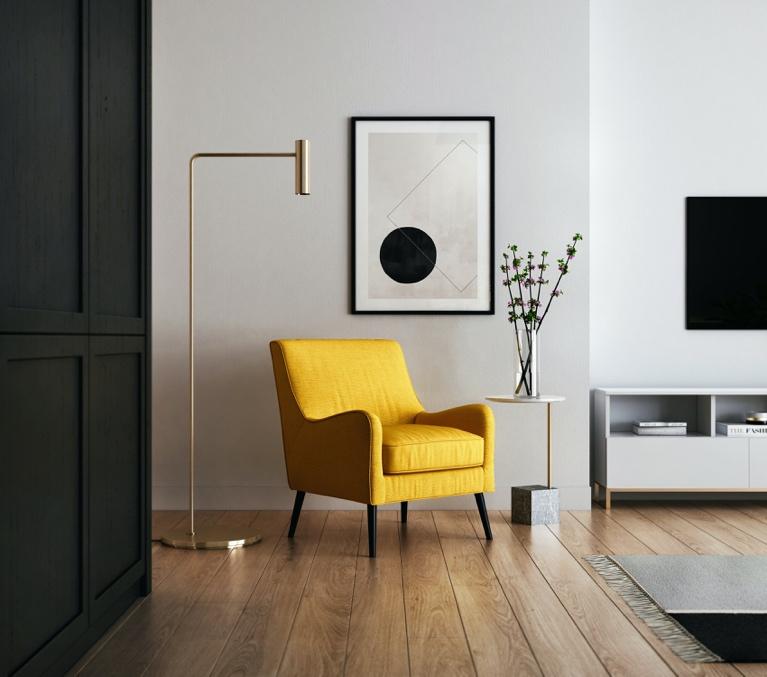
Artwork can transform your living space, adding personality or as we call it “your individual Kook” to your space. Whether you’re a seasoned art collector or just starting to curate your collection, knowing how to hang art correctly can really transform a room.
In this blog, we’ll share some valuable tips and tricks to help you hang art in your home like a professional curator.
1. Plan Your Layout
Before you start hammering nails into the wall, take some time to plan your art arrangement. Consider the size, shape, and layout of your wall, as well as the dimensions of your artwork. We often lay out the various pieces on the floor in front of the wall first to get an idea of how it all comes together.
Also, remember that not all art needs to be hung on a wall, but rather casually placed on a shelf or in an alcove to create a special moment.
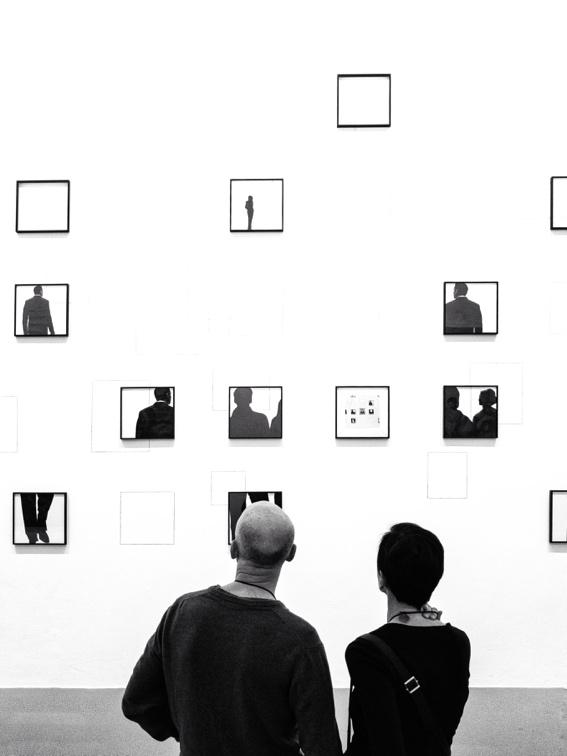
2. Find the Right Height
The most common mistake people make when hanging art is placing it too high or too low. To find the perfect height, follow the “eye level” rule, which suggests that the centre of your artwork should be at the average eye level (approximately 1.5m from the floor).
This ensures that your art is easily visible and creates a balanced look. However, always consider any furniture pieces that will be placed in front or close to the arrangement as you might need to adjust your placement slightly.
3. Group Similar Pieces
Grouping similar pieces of art together can create a powerful visual impact. Consider arranging a collection of smaller artworks in a gallery wall style, using a common theme, colour palette, or frame style to tie them together. Experiment with various layouts before committing to one.
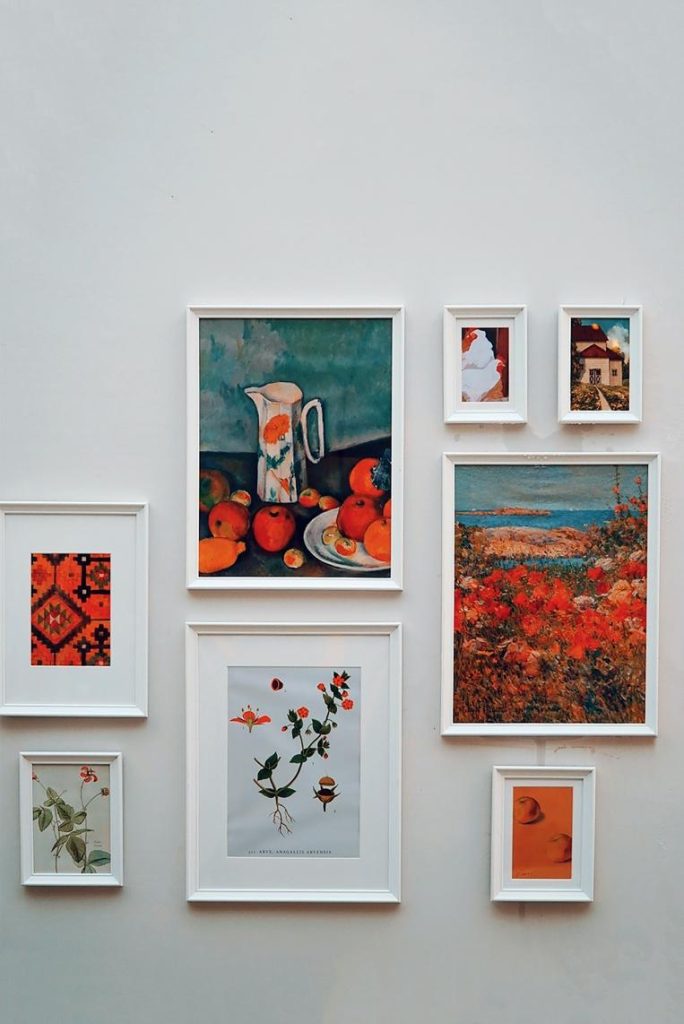
4. Balance and Symmetry
Maintaining balance in your art arrangement is essential. You can achieve balance through symmetry or asymmetry. Symmetrical arrangements would be something like a pair of identical frames, while asymmetrical layouts would be a mix of scale and type.
Striking the right balance depends on your personal style and the aesthetic of your space. Here at House of Kook, we like to mix it up, using both symmetrical and asymmetrical in various spaces throughout the house to create visual interest.
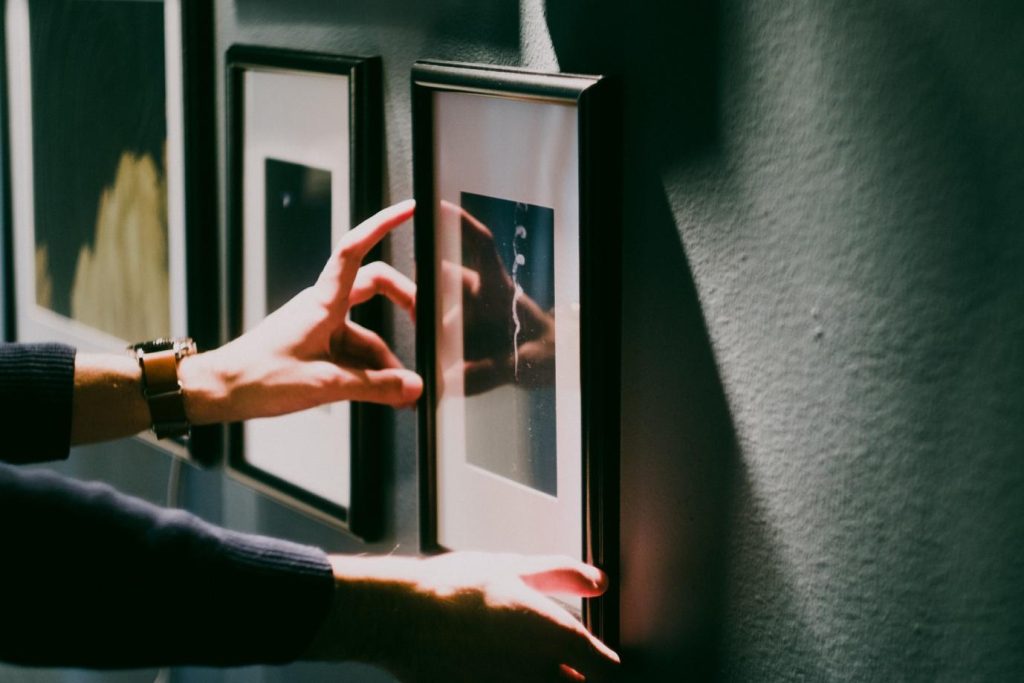
5. Use the Right Hardware
You probably already have one of these bad boys, but if not you need to go out and get yourself a Hilti nail tool kit. These are readily available from all major hardware stores. If you are hanging larger or heavier pieces you may need to invest in a handheld drill, our personal favourite is this cordless drill from Bosch.
You might be thinking, “Drill… I don’t know how to use a drill!?” To which we say, nonsense, yes you can, and it’s much easier than you think. Em-power yourself. Get it…?
Before you gear up, please consider the type of wall you are hanging the picture on, as drywall and brick walls require different types of nails and plugs, and they can safely bear different weight loads.
This goes without saying, but please use a tape measure to ensure equal spacing between artworks and maintain horizontal alignment. A spirit level will help you ensure that your artwork hangs straight and doesn’t tilt to one side. Our mantra here is to measure twice, and drill once!
And if you’re still not sure about power tools, wall types, and measuring, then call a local handyman to do this for you.
6. Consider Lighting
Proper lighting is crucial. Consider installing additional lighting with the sole purpose of illuminating your artwork. Track lighting is readily available from any number of lighting suppliers, but we particularly love a ‘picture light’. This brass light is a tried and tested favourite.
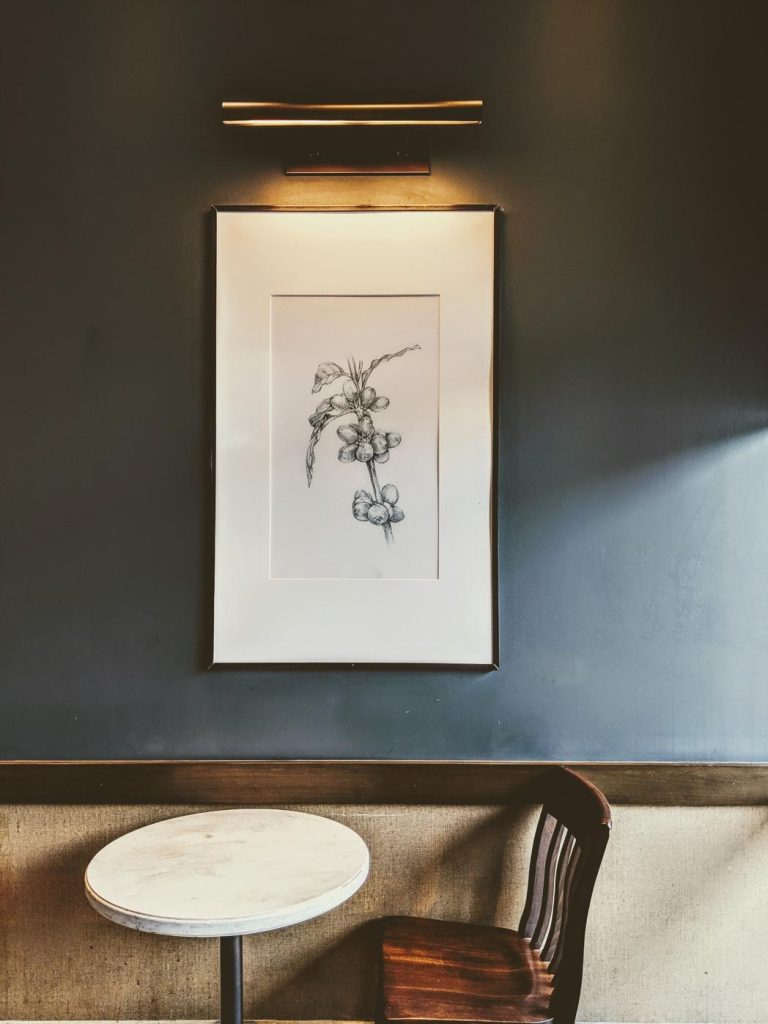
7. Frame Selection
Choosing the right frame can significantly impact the overall look of your art. You cannot go wrong with a simple slim black, white or wood-look frame. These can be bought dime a dozen from places like Mr Price Home, Woolworths or Country Road.
Consider using a professional framing company if you have some really special pieces that require something a little more elevated.
8. Mix Art and Decor
Don’t be afraid to mix art with other decorative elements, such as mirrors, shelves, or objects. This helps create that layered effect that ensures visual interest.
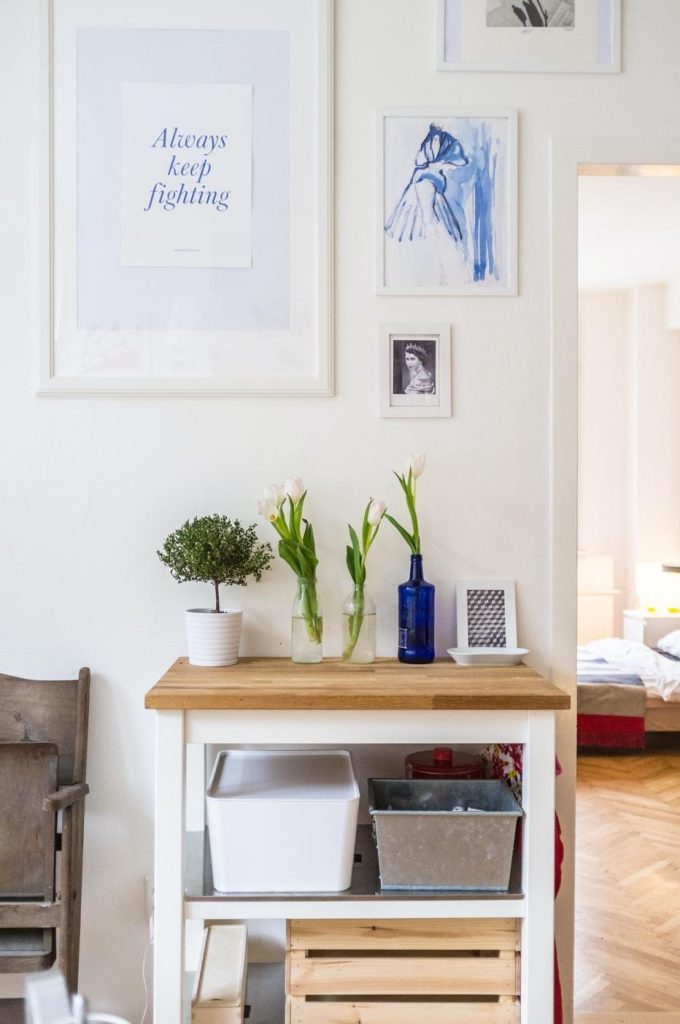
9. Stay Flexible
As your art collection grows and your tastes evolve, be open to rearranging and updating your art arrangement. Flexibility allows you to keep your space fresh and exciting, showcasing new acquisitions or rotating your existing pieces.
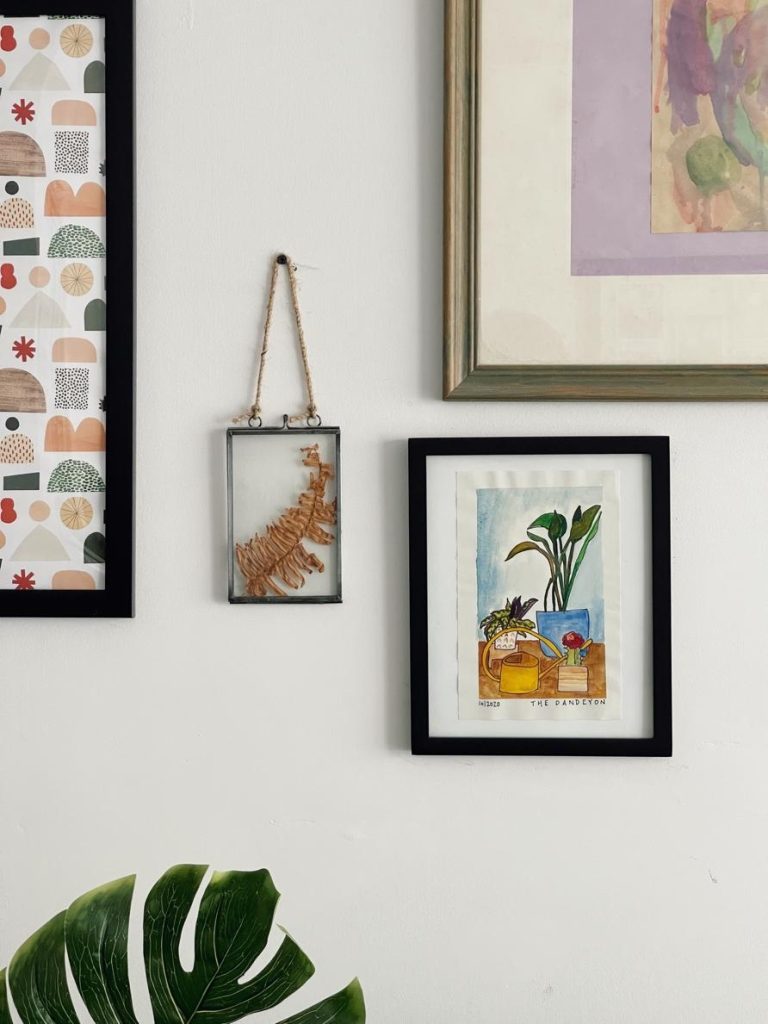
Go forth and frame!
That’s every tip and trick we’ve got in our arsenal for you. And it’s finally time for the exciting part: it’s time for you to start drilling holes and hanging artwork that lights up your space and makes you feel celebrated and sophisticated. If you find yourself stuck, don’t hesitate to call a handyman or get in touch with us.
